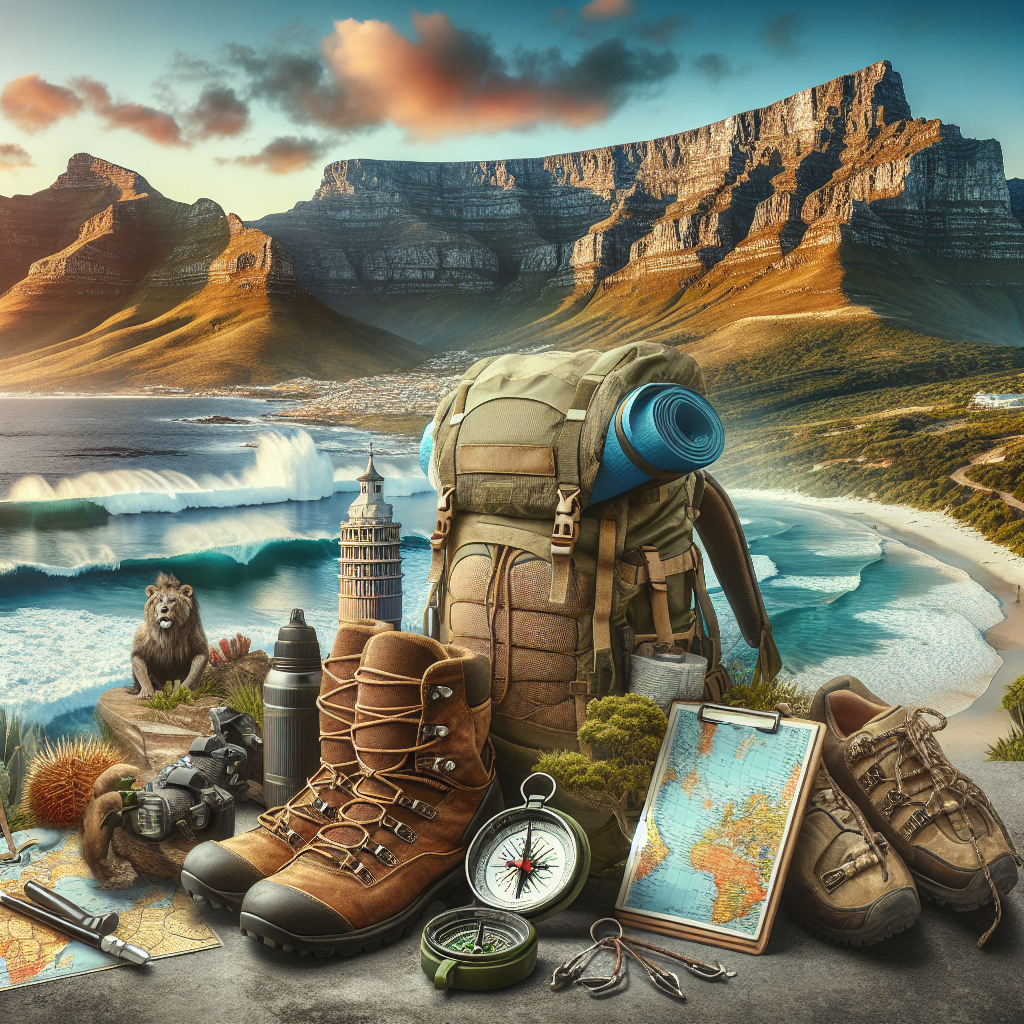The Ultimate Guide to Backpacking Across South Africa: Where to Go and What to See
South Africa, a country known for its diverse landscapes, rich history, and vibrant culture, is a haven for backpackers seeking adventure and an array of experiences. From the lush vineyards of the Western Cape to the rugged coastline of the Eastern Cape, and the wildlife-rich national parks in the north, South Africa offers a journey of discovery that can be both exhilarating and enriching. In this ultimate guide, we’ll explore the top destinations and essential experiences for backpackers venturing across this beautiful country.
Cape Town and the Western Cape
Cape Town is the quintessential starting point for any backpacking adventure in South Africa. Dominated by the iconic Table Mountain, the city is a blend of stunning natural beauty, historical significance, and cosmopolitan flair. Hike or take the cable car up Table Mountain for panoramic views of the city and explore the vibrant streets of Bo-Kaap, known for its colorful houses and rich Cape Malay culture. The Cape Peninsula offers a scenic drive to the Cape of Good Hope, with stops at Chapman’s Peak, Boulders Beach to see the penguins, and the Cape Point Nature Reserve.
Venture into the Cape Winelands, a short drive from Cape Town, where towns like Stellenbosch and Franschhoek offer wine tasting tours amidst spectacular mountain backdrops. The region is not only a wine lover’s paradise but also a haven for foodies, with numerous top-rated restaurants.
The Garden Route
The Garden Route is a must-do road trip, stretching from Mossel Bay in the Western Cape to Storms River in the Eastern Cape. This route is famous for its coastal scenery, lush forests, and adventure activities. Highlights include the Tsitsikamma National Park, where you can go bungee jumping at Bloukrans Bridge, the world’s highest commercial bungee jump, and exploring the Cango Caves near Oudtshoorn. The towns of Knysna and Plettenberg Bay are perfect stops for enjoying beautiful beaches and delicious seafood.
Eastern Cape
The Eastern Cape offers a blend of beautiful beaches, surfing hotspots, and rich cultural heritage. Jeffreys Bay is renowned for its surfing waves, while the Wild Coast offers rugged, unspoiled beauty and traditional Xhosa culture. Don’t miss the opportunity to hike in the Amatola Mountains or explore the colonial history of Grahamstown.
KwaZulu-Natal
Durban is South Africa’s melting pot of cultures, known for its Indian influences, beautiful beaches, and the Golden Mile. The Drakensberg Mountains present a dramatic backdrop for hiking and exploring San rock art. The region is also the gateway to two UNESCO World Heritage sites: the iSimangaliso Wetland Park, where you can see hippos, crocodiles, and an array of birdlife, and the uKhahlamba Drakensberg Park, known for its stunning landscapes and ancient rock art.
Kruger National Park and Mpumalanga
No visit to South Africa is complete without experiencing its wildlife. The Kruger National Park is one of Africa’s largest game reserves, where you can spot the Big Five (lion, leopard, rhinoceros, elephant, and Cape buffalo) and more. Backpackers can opt for guided safari tours or self-drive adventures. Nearby, the Panorama Route in Mpumalanga offers breathtaking views of natural wonders like the Blyde River Canyon, God’s Window, and the Three Rondavels.
Practical Tips for Backpacking in South Africa
– Transport: South Africa is a large country, and getting around requires planning. Long-distance buses, such as Greyhound and Intercape, offer affordable travel between cities. Renting a car provides more flexibility for exploring off-the-beaten-path destinations.
– Accommodation: From hostels in major cities to camping in national parks, there are budget-friendly options for every type of traveler. Booking in advance is recommended during peak seasons.
– Safety: While South Africa offers incredible experiences, it’s important to be cautious, especially in cities. Stick to well-traveled areas, don’t flash valuables, and keep informed about areas to avoid.
Recreating the Experience or FAQ
Q: How can I recreate the backpacking experience once back home?
A: Keep the spirit of adventure alive by exploring local hikes, joining cultural events, and staying connected with fellow travelers you met on your journey. Cooking traditional South African dishes or creating a photo album are great ways to relive the memories.
Q: What is the best time to backpack across South Africa?
A: South Africa is a year-round destination, but the best time depends on your activities. For wildlife viewing in the Kruger National Park, winter (May to September) is ideal. For beach destinations and the Garden Route, summer (November to March) is preferable.
Q: Do I need a visa to backpack in South Africa?
A: Visa requirements vary depending on your nationality. Many countries are exempt for stays of up to 90 days. Always check the latest visa requirements before planning your trip.
Q: Is it safe to backpack alone in South Africa?
A: Yes, many backpackers travel solo across South Africa. However, it’s important to take standard safety precautions, stay informed, and connect with fellow travelers or locals for advice and companionship.
Q: Can I work while backpacking in South Africa?
A: Working on a tourist visa is not permitted. However, there are volunteer opportunities, especially in conservation projects, that can enrich your travel experience.
Backpacking across South Africa offers an unparalleled opportunity to explore the rich tapestry of landscapes, cultures, and experiences. With careful planning and an adventurous spirit, it promises to be an unforgettable journey.
